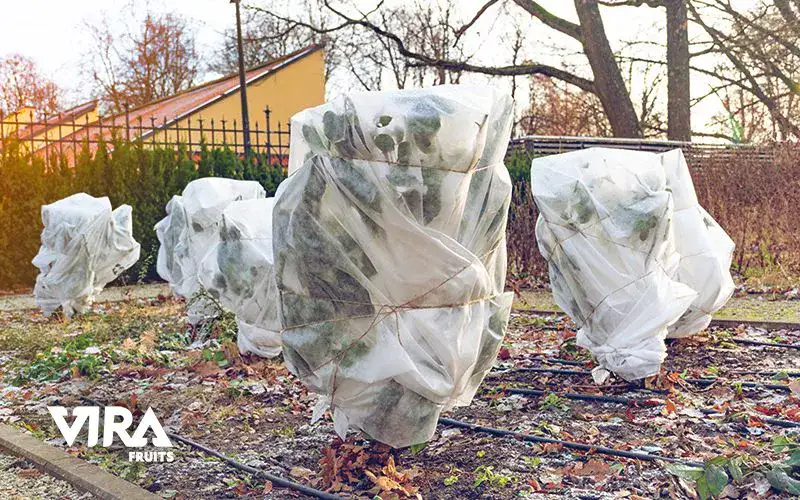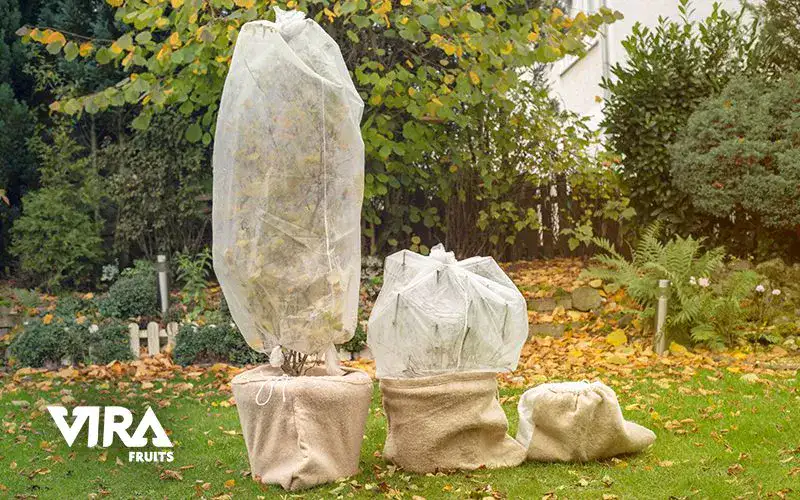You can protect the trees in winter to bloom in spring. But you need to know exactly what ways are needed for a tree to withstand the cold of winter and not perish. It does not matter if you have trees in your backyard or on a farm. In any case, you can protect the trees in winter. You just need to know how resistant a tree is to the cold and then take steps that can protect the tree from the cold. Apple trees, for instance, require anywhere from 500 to 1,000 chill hours – temperatures between 32 and 45°F – in order to bloom in the spring. If you are in an area where the weather is colder than usual for apple trees, which can damage them, you should take precautionary measures to protect the tree from the cold in winter. The best time for winter protection of fruit trees is in the fall. As a result, protect the trees before the onset of extreme cold.

Tree plants and winter
Fruit trees often seem fragile during the winter with their bitter-cold, freezing, and sub-zero temperatures; however, as long as fruit trees are growing within their hardiness zone, they will do beyond our expectations. In the ground, trees spend all of their time outdoors, so what might look like a sudden drop in temperature to us (as winter approaches) is actually something the dormant trees have learned to cope with. Dormant fruit trees are less susceptible to winter injury, but they may still need protection from the cold. A fruit tree that has had a strong growing season is likely to survive the winter. Even healthy fruit trees that are given winter protection will have an advantage over the harsh winter elements since it’s best to be safe. After you’ve finished planting your fruit trees in the fall, be sure to winterize them. Consider protecting trees in the winter, since this can have a significant impact on their fertile season.
So, how to protect the trees in winter?

Ways to protect the trees in winter!
Try not to prune your trees in the fall. If you do, it might prod branch development and delicate youthful branches can break throughout a colder time of year ice.
Throughout the mid-year, paint your tree’s trunk with a 50:50 blend of white latex paint and water. Permit the paint to dry. This white covering will shield your organic product tree from the sun-related burn! Throughout the colder time of year, splendid daylight pondered snow can bring about a break in the bark on the radiant side of your tree. This harm can be a passage point for bugs and illnesses.
Fastidiously tidy up totally fallen products of the soil from around the foundation of your tree in the fall. In the event that the products of the soil have any indication of vermin or sickness harm, they should be taken out from the site. Why? All things considered, vermin and illnesses will overwinter in the leaf litter and cause issues down the road for you and your organic product tree one year from now!
Mulch your trees to guarantee their underlying foundations are protected from the colder time of year cold. Use mulches that decay gradually like treated the soil wood chips or straws. Try not to utilize fertilizer or decayed excrement as it will provide your tree with an eruption of energy and may delay dormancy.
While mulching your tree, guarantee that the mulch doesn’t contact the bark of the tree by any stretch of the imagination. Spot your mulch all around or doughnut shape around your tree, surrendering to six inches mulch free close to the storage compartment. Heaping mulch facing the storage compartment can make the bark decay.
Keep organic product trees all around watered until pre-winter. This is particularly significant in case precipitation is hard to come by. Water profoundly—1 to 2 creeps all at once—so dampness enters completely into the root zone. You can set up a clock and either a soaker hose or drip irrigation system. If overhead watering, set out a dish to gauge how much water has been scattered.
To protect the trees in winter, you should follow all the above. Note that trees and plants, like us humans, are alive and need care, so treat them well.
